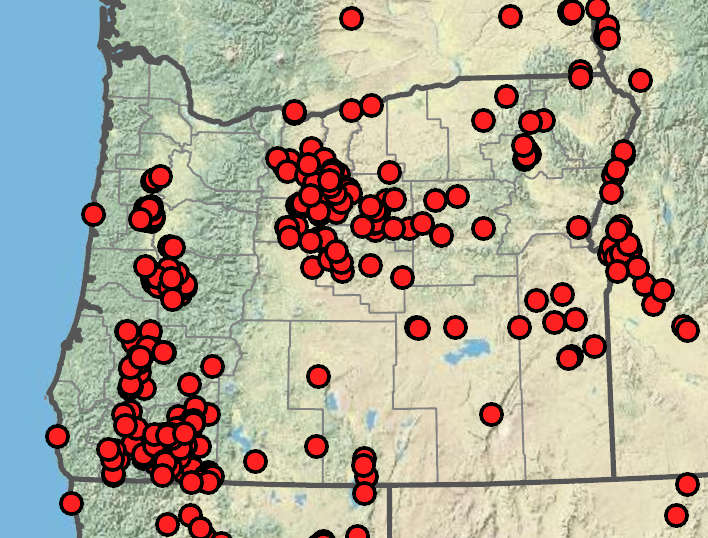Taeniatherum caput-medusae
medusahead
erect to decumbent.
sheaths glabrous;
blades flat to involute, 0.5–2.5 mm wide, glabrous or scabrous.
terminal spikes 1.2–6 cm;
spikelets 2(4) per node.
6–45 mm, with 2(3) florets.
awn-like; erect to reflexed; (5)7–28 mm, 1-veined, scabrous with a few scattered hairs.
4–5.2 mm.
5.5–8 mm, 5-veined, glabrous or scabrous;
tips awned;
lemma awns divergent; straight when young but often becoming twisted; (20)30–110 mm, arising from the lemma apex; the longest longer than the inflorescence axis.
0.8–1 mm.
=14.
Taeniatherum caput-medusae
Disturbed areas, felds, dry roadsides, degraded sage steppe. 0–1900m. All ecoregions except BR. CA, ID, NV, WA; north to British Columbia, southeast to UT; Australia, Eurasia. Exotic.
Taeniatherum caput-medusae has long, twisted awns that are longer than the inflorescence axis. It may be confused with Elymus elymoides, a long-awned, perennial bunchgrass with an inflorescence axis that disarticulates when mature. This grass is an aggressive invader of grasslands and shrub steppe in the arid west. It forms a dense thatch that is slow to decompose and forms monocultures that exclude both native and introduced plants, including other invasive annual grasses such as Bromus tectorum. Its forage value is limited due to its low stature and its long, irritating awns.
Barbara Wilson, Richard Brainerd, Nick Otting
- Local floras:
CA,
OR,
WA
- Local Web sites:
CalFlora,
CalPhotos,
Flora NW,
PNW Herbaria
WildflowerSearch
iNaturalist (observations)
USDA Plants Database
- LBJ Wildflower Center
- SEINet
- Plants of the World Online
- Encyclopedia of Life
- Wikipedia
- Google Image Search



